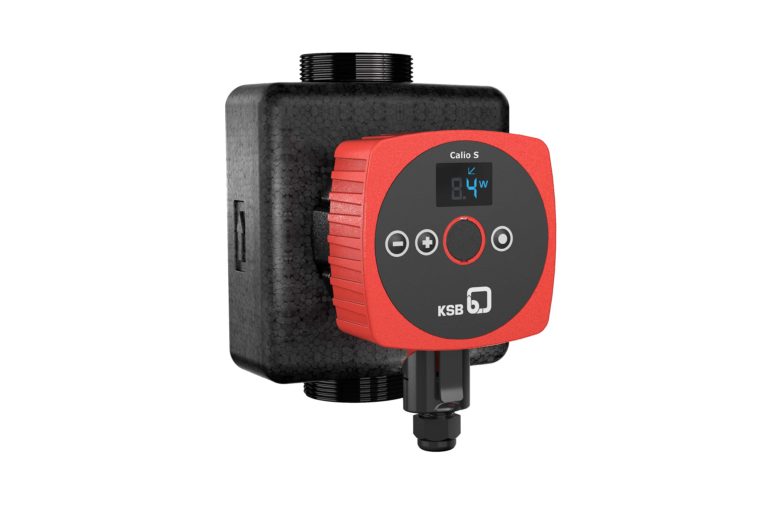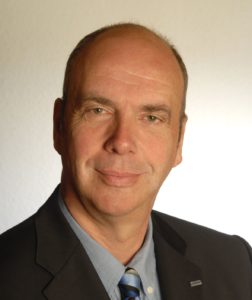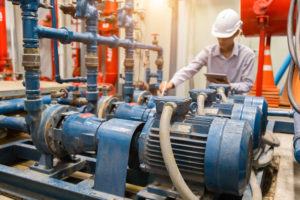Circulators for heating systems cut energy costs by up to 20 percent

The latest Calio S generation comes with the new Dynamic Control function already integrated, resulting in energy savings of up to 20 percent. (Image source: KSB SE & Co. KGaA)
The new function, called Dynamic Control, is an intelligent programme that helps cut pump input power by up to 20 percent compared with conventionally controlled pump sets.
Modern circulators change their speed to match current demand. They adjust their flow rate and head, based on an algorithm, moving the operating point along a programmed control curve.
The minimum system curve describes the friction loss when all thermostatic valves are fully opened. As the minimum system curve is usually unknown, plant designers select a control curve for conventional systems that is clearly above the minimum system curve. This uses more power than necessary and can also cause disturbing noises at the radiators’ thermostatic valves.
Dynamic Control moves the operating point down from the currently selected control curve until the minimum system curve is reached. Should the latter be undercut the algorithm re-sets the pump to its original control curve, thus ensuring sufficient supply. Safe recognition of the minimum system curve by means of a flow rate signal rules out undersupply. This ensures that the building is supplied with sufficient heat.
As the implementation is purely based on software, no additional costs will be incurred by further sensors or actuators. The pump automatically gathers all required information from its internal signals. The installer no longer needs to make time-consuming settings since the pump is able to determine the system curve itself. The operator benefits from lower energy costs and less noise. Reducing energy also has a positive effect on the carbon footprint.
The new function is already integrated in the current Calio and Calio S type series and can be installed as an update in pumps of the third generation of this type.
Source: KSB SE & Co. KGaA





